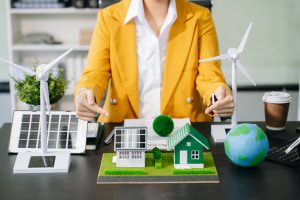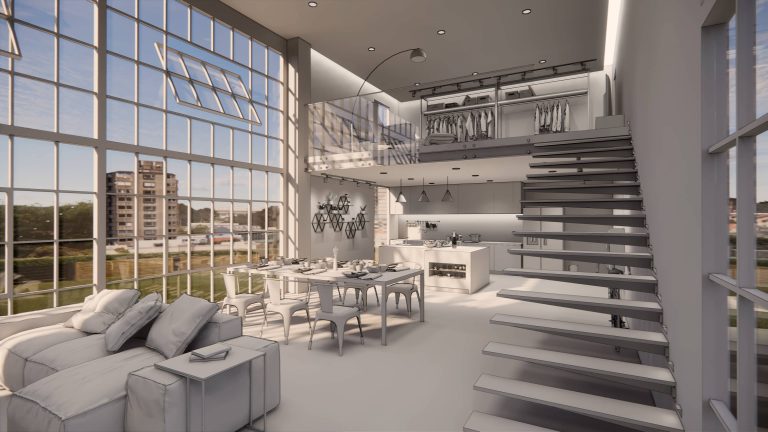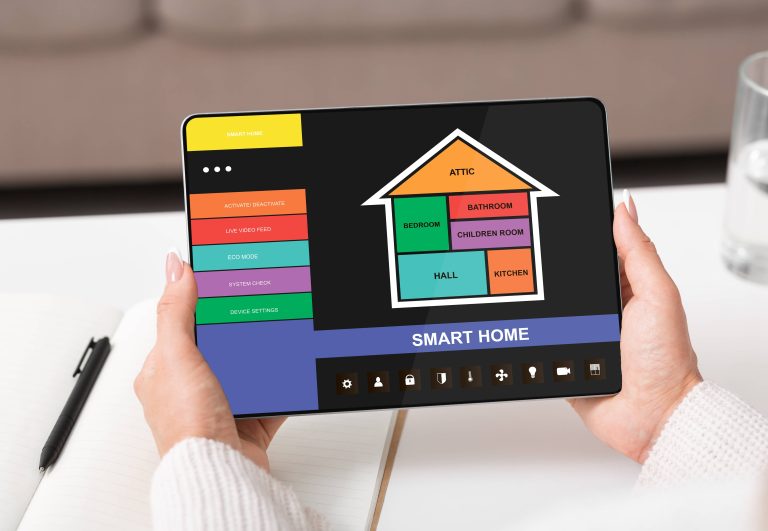
Introduction
In an age where innovation is at its peak and the environment is at the forefront of our concerns, self-sustaining smart homes are emerging as the perfect blend of technology and eco-conscious living. Constructing such a home involves integrating advanced smart home technologies with sustainable design practices. Follow along as we unwrap the crucial steps to building your very own self-sustaining smart home that not only enhances comfort and entertainment but also promises efficiency and minimal environmental impact.
Step 1: Energy Efficiency Assessments
Energy efficiency is the cornerstone of any self-sustaining smart home. Start by assessing the current energy consumption of your home. Smart energy monitors and meters are beneficial for tracking and analyzing consumption patterns. They provide real-time data that can highlight areas where energy is wasted and point towards potential improvements. With the data in hand, you can develop a plan to reduce your home’s energy footprints starting from insulation improvements to more efficient lighting and appliance upgrades.
Step 2: Renewable Energy Integration
The key to a self-sustaining home lies in the ability to generate your own energy. Installing solar panels is one of the most common and effective methods. Modern solar panels, combined with home batteries like the Tesla Powerwall, can store excess energy for cloudy days or nighttime use. Wind turbines and micro-hydro power systems are other viable options depending on your locality. Paired with a smart home system, these renewable technologies can manage energy distribution intelligently, ensuring maximum efficiency.
Step 3: Smart Energy Management Systems
Integrating a smart energy management system (EMS) is crucial. These systems ensure that the energy generated and consumed in your home is optimized. An EMS can control various aspects like lighting, heating, cooling, and appliance usage based on occupancy and real-time data, distributing energy where it’s needed most and reducing waste. Setting up automation rules through platforms like Google Home, Amazon Alexa, or Apple HomeKit can greatly increase your home’s energy efficiency, allowing appliances to operate during off-peak hours or integrating weather-sensitive adjustments automatically.
Step 4: Water Conservation Techniques
Water conservation is another significant aspect of a self-sustaining home. Smart irrigation systems, like Rachio, can water your garden based on local weather conditions and soil moisture levels. Low-flow fixtures, smart showerheads, and faucets can further reduce water usage, while smart leak detectors promptly alert you to any issues, preventing water damage and wastage.
Step 5: Sustainable Building Materials
Construction and renovations present opportunities to use sustainable materials. Opt for environmentally friendly materials like reclaimed wood, recycled metal, bamboo, and eco-bricks. Insulating materials such as wool or cellulose improve energy efficiency. Using low-VOC (Volatile Organic Compounds) paints enhances indoor air quality. Such materials not only reduce the environmental impact but also often outperform traditional materials in terms of durability and performance.
Step 6: Efficient Heating and Cooling Solutions
Heating and cooling represent major energy consumption areas. High-efficiency HVAC systems, geothermal heat pumps, and even radiant floor heating can drastically reduce energy use. Smart thermostats like the Nest Learning Thermostat or the Ecobee SmartThermostat learn your schedule and preferences, adjusting the temperature automatically to reduce energy usage while maintaining comfort. Some even leverage zoned heating and cooling, ensuring that unoccupied rooms are not unnecessarily heated or cooled.
Step 7: Smart Lighting
Lighting, while seemingly minor, accounts for a significant portion of your energy bill. Implementing LED lighting significantly reduces energy consumption compared to incandescent bulbs. Smart lighting systems, such as Philips Hue, allow you to control lights remotely, set schedules, and even adjust brightness based on natural light availability, thereby minimizing energy waste and creating a comfortable living environment.
Step 8: Advanced Home Security
Whilst not directly related to sustainability, smart security solutions play a critical role in protecting your investment. Systems like Ring, Arlo, and SimpliSafe offer smart cameras, motion sensors, video doorbells, and alarm systems. These systems can be managed remotely, sending real-time alerts to your smartphone, enhancing home security and ensuring peace of mind.
Step 9: Waste Management and Composting
Effective waste management practices contribute to the sustainability aspect of your home. Smart waste bins, which offer notifications when they need to be taken out and can even sort recyclables, simplify the process. Composting organic waste reduces landfill contributions and can provide rich, nutritious compost for your garden. There are even smart composters available that speed up the breakdown process and reduce odors.
Step 10: Indoor Air Quality
Maintaining good indoor air quality aids in creating a healthy and comfortable living environment. Smart air quality monitors like Awair or Airthings can provide real-time data on pollutants and allergens in your home. Air purifiers, equipped with HEPA filters and intelligent controls, can work synergistically to maintain optimal air quality.
Conclusion
Creating a self-sustaining smart home is a harmonious blend of advanced technology and sustainable living practices. Every step, from energy management to waste reduction, contributes to an efficient and eco-friendly lifestyle. The initial investment in time and resources pays off by lowering utility bills, reducing environmental impact, and elevating comfort.
With dedication and careful planning, your smart home can be transformed into a self-sustaining sanctuary that not only provides daily comfort and entertainment but also contributes positively to the environment. Embrace the future of residential living and lead by example, showcasing that sustainability and smart technology can go hand in hand for a better, greener tomorrow.







